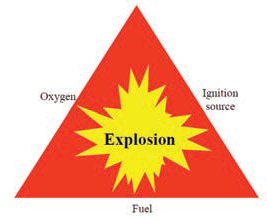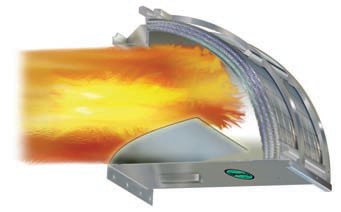No big bang
27 January 2015Explosion hazards in wood handling facilities are often underestimated, says Dr-Ing Johannes Lottermann of Rembe GmbH Safety + Control.
Wood can burn. Wood pellets and chips belong to the important secondary fuels category in modern power plants, furnaces or heat generators, so this is quite obvious.
However, although this feature of wood is known in general, it is still not common knowledge that this combustibility makes wood handling processes some of the most hazardous in industry from an explosion standpoint; explosion incident statistics are evidence enough.
But what makes wood material and wood handling processes so special in terms of explosion hazards?
This question can be answered quite simply. Considering the requirements of the dust explosion phenomenon - combustible dust, air/ oxygen and effective ignition sources - nearly all wood handling installations have the 'perfect mixture' for dust explosions to occur.
Using the example of a fibreboard plant, where all typical wood industry-related equipment, such as silos, conveyors, screens, mills, dryers, cyclones and dust collectors are found, an explosion hazard is even more likely, as all the above-mentioned equipment creates wood dust, causing explosive atmospheres.
Additionally, given mechanical moving parts, as well as drying processes, ignition sources are easily generated.
In Autumn 2012, this deadly combination led to one of the most severe wood dust explosions in history in South America, where five people lost their lives and the entire plant was shut down for more than five months.
How to protect against explosions The explosion safety concept for such plants is typically made up of a combination of explosion prevention measures and explosion protection measures (reducing explosion effects to an acceptable level).
Explosion prevention means taking measures to prevent the formation of explosive dust clouds, as well as avoiding ignition sources by de-dusting, housekeeping, grounding, proper maintenance and/or spark extinguishers.
We know that even if all preventive measures are applied (especially with regard to the latter), this approach might lead to misapplication of spark extinguishers that might not work if particles are large.
It also cannot suppress an explosion and only addresses the ignition risk arising from small, hot particles. Nor does it prevent ignition sources from tramp metal or hot surfaces.
That is why protective measures also have to be applied in most wood handling installations. They typically apply one of these approaches:
- Explosion resistant design (simple explanation: make equipment so sturdy it will withstand explosion over-pressure of up to 10 bar)
- Explosion pressure venting (simple explanation: pressure and flame relief by applying a predetermined breaking point on the installation)
- Explosion suppression (simple explanation: a rapid fire extinguisher that stops the flame)
- Explosion isolation (simple explanation: prevent flame and/or pressure propagation to downstream or upstream units)
Due to minimal maintenance requirements and low investment costs, passive explosion protection approaches, such as explosion pressure venting, is the most commonly used in wood handling facilities. The fact that these blast panels can be combined with flame-trapping mesh materials allows various applications to be protected by so-called flameless vents.
As with any comprehensive safety concept, even a fully protected plant can only be secure when all relevant persons, situations and conditions are taken into account. In practice, this means that plant management in the wood handling industry has to be aware of the explosion risk in general, implement available explosion safety measures and educate plant personnel.
The awareness of the need for combustible dust explosion safety has to be raised so that catastrophic events are not likely to endanger health, lives and business objectives such as profitability, continuity and productivity.
Therefore, a risk analysis should be carried out to identify the hazards and to allow the implementation of appropriate safety measures.
The 'butterfly' effect
When conducting a risk analysis, all circumstances have to be taken into consideration - this last example impressively shows that even small 'bugs' can influence the explosion risk of plants.
As an example, several sawmill operators carried out a risk analysis and decided not to protect their installations handling wood chips with, normally, high humidity content. These conditions changed following a pine beetle infestation that led to many dead/dried trees.
After a long period of quarantine, these trees were purchased at a low price and brought to the sawmill. Due to the pine beetle infestation, the resulting wood chips were drier than usual and many explosions occurred in the sawmill plants, leading to long down times and several injured people.


